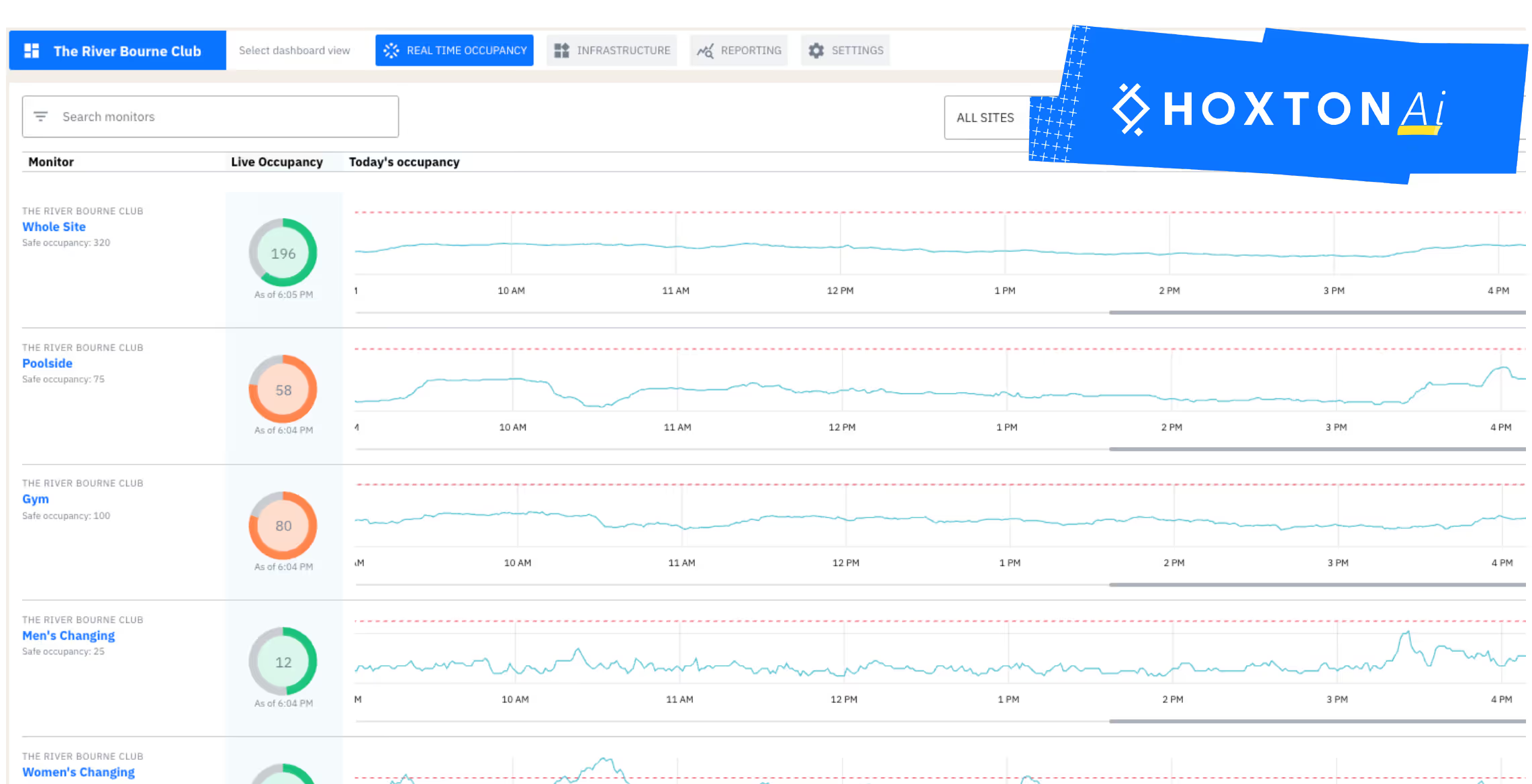Summary
The River Bourne Health Club in Chertsey needed to get smarter about operations - but swipe data and manual counts weren’t telling the full story. With thousands of visitors coming through each week, they turned to real-time occupancy data to unlock insight into true usage, and the results were game-changing.
The Challenge
Like many leisure operators, the centre relied on partial data:
- Swipe counts were misleading - One day showed 700 entries, but real usage was 1,400 people.
- Non-members weren’t being tracked — Children and parents for swimming lessons, Hussle pass users, NHS patients, and dance clubs flew under the radar.
- Complaints could spike, particularly about changing rooms and reception wait times.
- Cleaning schedules were fixed, not flexible.
- Class scheduling lacked real insight.
- Café sales lagged behind footfall potential.
“We always thought we were busy. We just didn’t realise how busy—or when.” – Matt
The Data
With occupancy sensors placed across entrances, gym zones, changing rooms, and pool areas, the team unlocked a stream of insights:
- True footfall: 1400 visitors in one day, double what the swipe data showed.
- Changing room usage: Women’s areas saw 50% more footfall - linked to kids’ swim lessons.
- Cleaning misalignment: Highest use was 3–5pm, but cleaning happened at quieter times.
- Pool usage: Expensive to run, but often empty - data helps to plan classes during quiet periods.
- Reception overload: Third-party group arrivals (e.g. karate, dance schools) created hidden peaks.
- Low café conversion: 1400 visitors… twice as many visitors means the sales conversion rate for the cafe was half of what we thought. Shone a spotlight on space for improvement.
The Action
With data in hand, the team took decisive action:
- Adjusted cleaning schedules to reduce cost and complaints.
- Rescheduling classes to ease pressure on reception and changing rooms.
- Refining staffing for gym and front desk—matching real demand.
- Re-evaluating underused spaces — considering things like golf simulators where footfall was low.
- Improving café strategy — using occupancy data to boost conversion.
“This data is helping us fine-tune many parts of the operation. It’s not just about cost - it’s about the experience. And that drives retention.” – Matt, General Manager
The Results
What started as a test turned into measurable improvements:
- Fewer complaints, especially around cleaning and congestion.
- Smarter staff deployment = operational savings.
- Cleaning rotas to match real usage - especially for female changing rooms.
- Pool events now scheduled around quiet times - maximising ROI.
- Improved discussions with the council and other stakeholders - data formed evidence of car park usage and showed how many people used and paid for parking that are not members.
- Clear reporting to the board, enabling strategic decisions.
What’s Next?
The team is considering other spaces they can cover, with the plug and play system, bringing more visibility to their operations.
They’re also trialling the new HoxtonAI Spotlight system, to gain insight into which machines and equipment are most used at which time - a simple innovation to help plan investment and usage in equipment.
“The data is clearly useful, but it’s also important that we could set up quickly and easily.” - Matt
Why It Matters
This case highlights the power of occupancy data in a data-poor industry. With visibility comes control - and with control comes better service, smarter spending, and stronger member retention.
%20(1).png)





